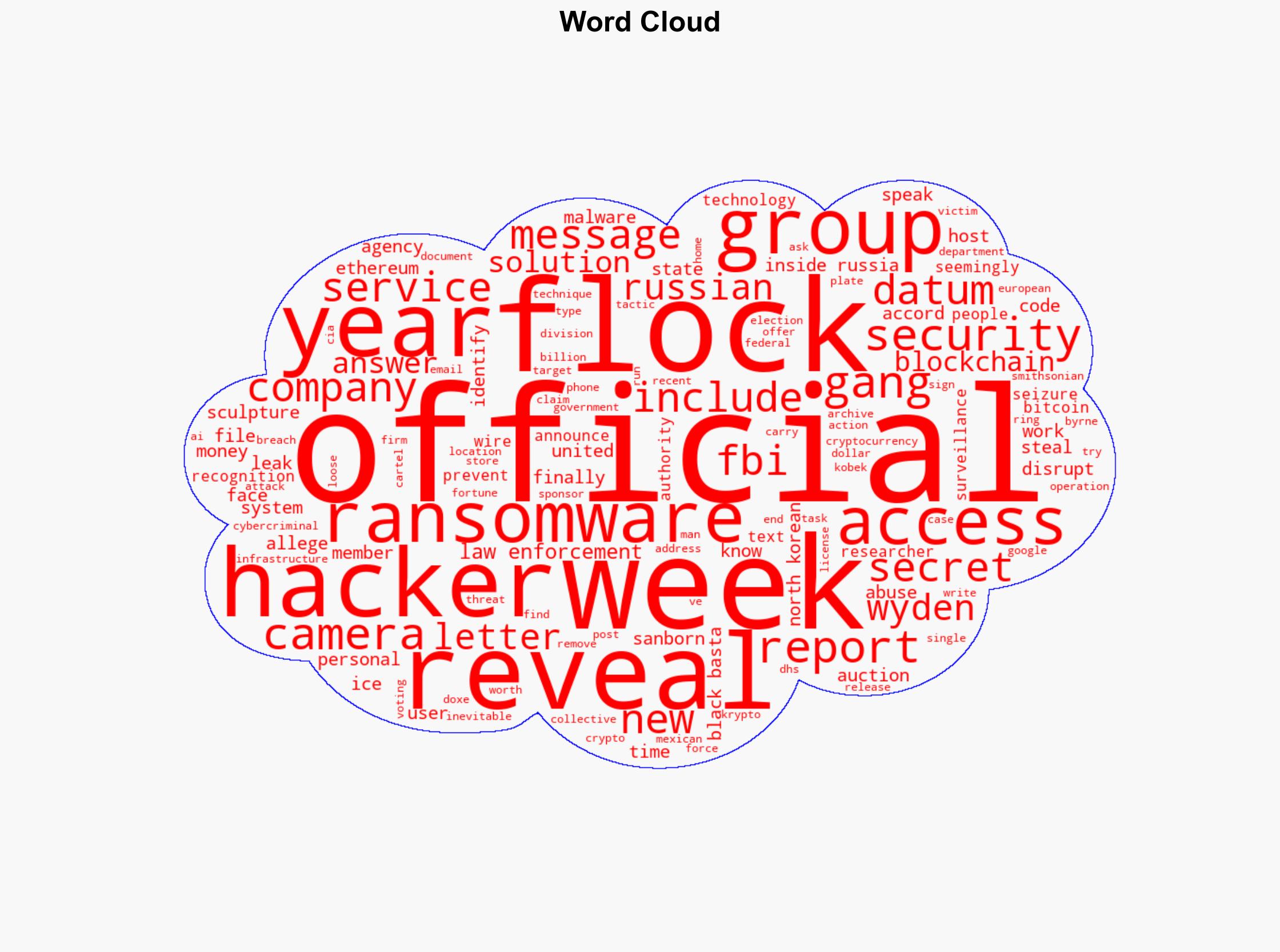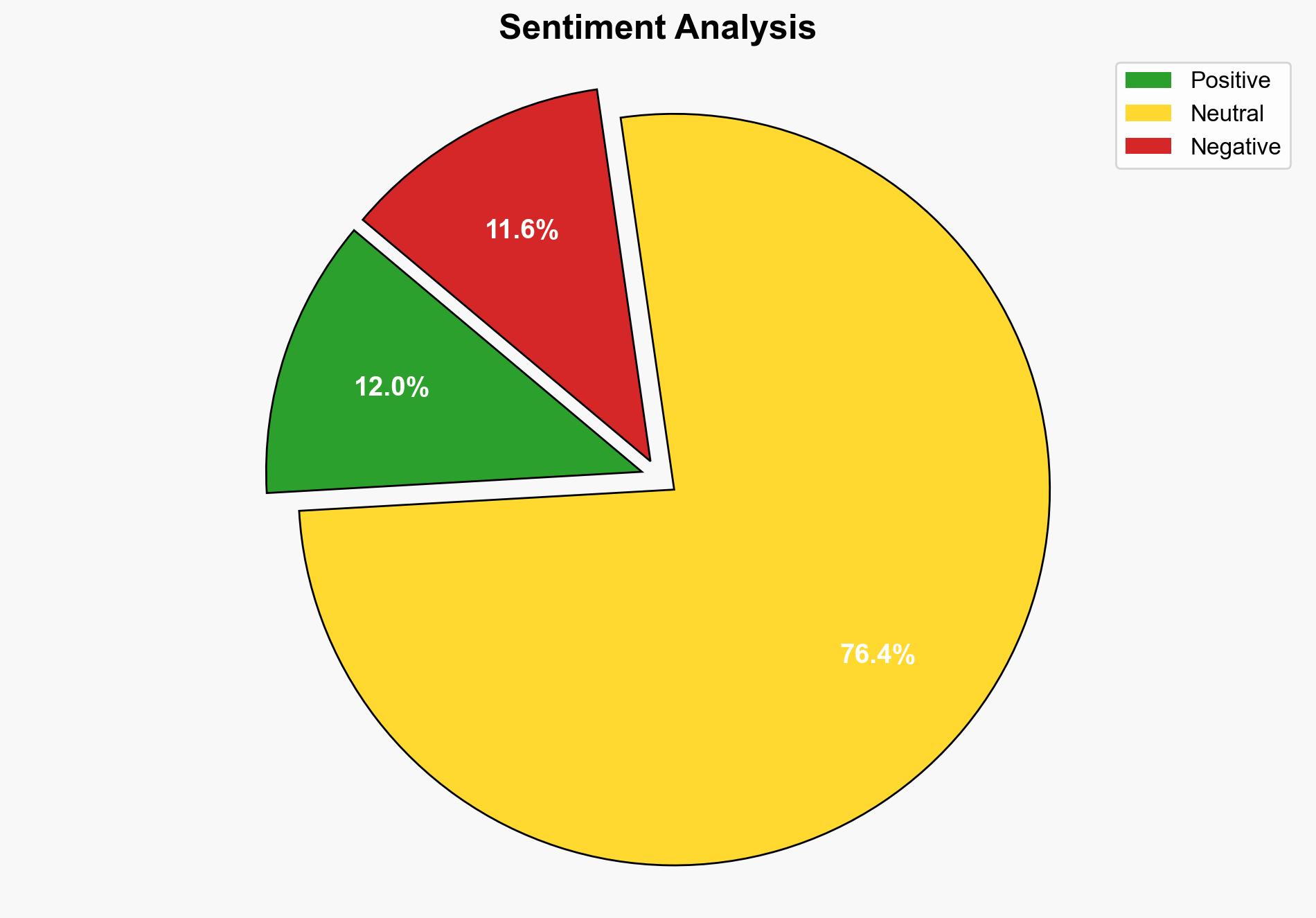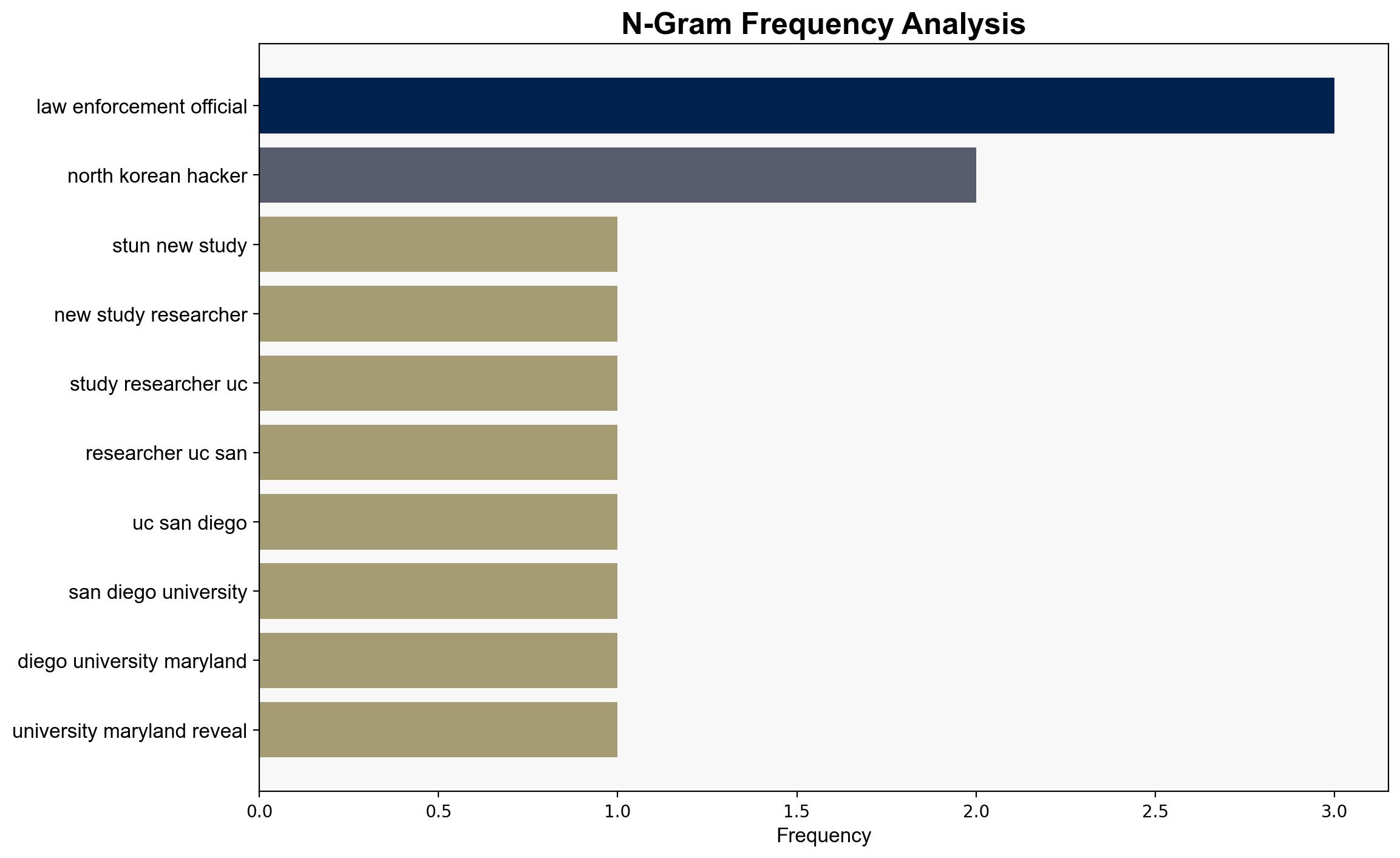Hackers Dox ICE DHS DOJ and FBI Officials – Wired
Published on: 2025-10-18
Intelligence Report: Hackers Dox ICE DHS DOJ and FBI Officials – Wired
1. BLUF (Bottom Line Up Front)
The most supported hypothesis is that the doxing of federal officials by a cybercriminal group is part of a broader campaign to undermine U.S. law enforcement and intelligence agencies. This is likely aimed at destabilizing internal security and exploiting vulnerabilities in governmental cybersecurity. Confidence level: Moderate. Recommended action: Strengthen inter-agency cybersecurity protocols and enhance monitoring of cybercriminal activities linked to foreign entities.
2. Competing Hypotheses
Hypothesis 1: The doxing incident is a coordinated effort by a cybercriminal group to disrupt U.S. federal agencies, potentially with foreign backing, to weaken national security.
Hypothesis 2: The doxing is primarily a financially motivated operation by independent cybercriminals seeking ransom or notoriety, with no direct foreign involvement.
Using the Analysis of Competing Hypotheses (ACH) 2.0, Hypothesis 1 is better supported due to the sophistication of the attack, the targeting of high-profile federal agencies, and the potential links to foreign actors, as suggested by the breach of a security firm reportedly linked to China.
3. Key Assumptions and Red Flags
Assumptions include the belief that the cybercriminal group has the capability to execute such sophisticated attacks and that foreign entities have an interest in destabilizing U.S. agencies. Red flags include the lack of concrete evidence directly linking foreign actors to the doxing and the possibility of misinformation or exaggeration in the claims of the hackers.
4. Implications and Strategic Risks
The doxing could lead to increased distrust in federal agencies, potential exposure of sensitive operations, and a heightened risk of further cyberattacks. If foreign involvement is confirmed, it could escalate geopolitical tensions and provoke retaliatory measures. The incident underscores vulnerabilities in cybersecurity infrastructure that could be exploited in future attacks.
5. Recommendations and Outlook
- Enhance cybersecurity measures across federal agencies, focusing on encryption and secure communication channels.
- Conduct a thorough investigation to identify the perpetrators and assess any foreign involvement.
- Increase collaboration with international partners to address cross-border cyber threats.
- Scenario-based projections:
- Best Case: Perpetrators are identified and apprehended, leading to improved cybersecurity protocols.
- Worst Case: Continued cyberattacks lead to significant breaches of national security.
- Most Likely: Incremental improvements in cybersecurity with ongoing threats from cybercriminals.
6. Key Individuals and Entities
Scott Leiendecker, Dominion Voting Systems, KnowInk, Black Basta ransomware gang.
7. Thematic Tags
national security threats, cybersecurity, counter-terrorism, regional focus





